The Red Planet
Is there life on Mars? Many ask themselves this question every day. But why do we actually ask ourselves this? Well, it's increasingly concerning how fast we're rampantly consuming Earth's natural resources. For some time now, the world's superpowers have been seeking alternative living conditions on other planets.
Another question is: Why Mars? Well, it's simple. It is reasonably similar to Earth: its surface is similar because it has polar caps, and it also has different seasons, canyons, and even volcanoes (inactive). This made Mars the perfect alternative according to the world's superpowers.
The USSR was supposed to be the first to send a probe to Mars, but, after 5 failed attempts, the U.S.A. became the first country to look for answers on the Red Planet; it has since sent multiple probes, ever since 1964. To this day, five NASA rovers landed on Mars: Sojourner (1997), Spirit and Opportunity (2004), Curiosity (2012) and, most recently, Perseverance (2020).
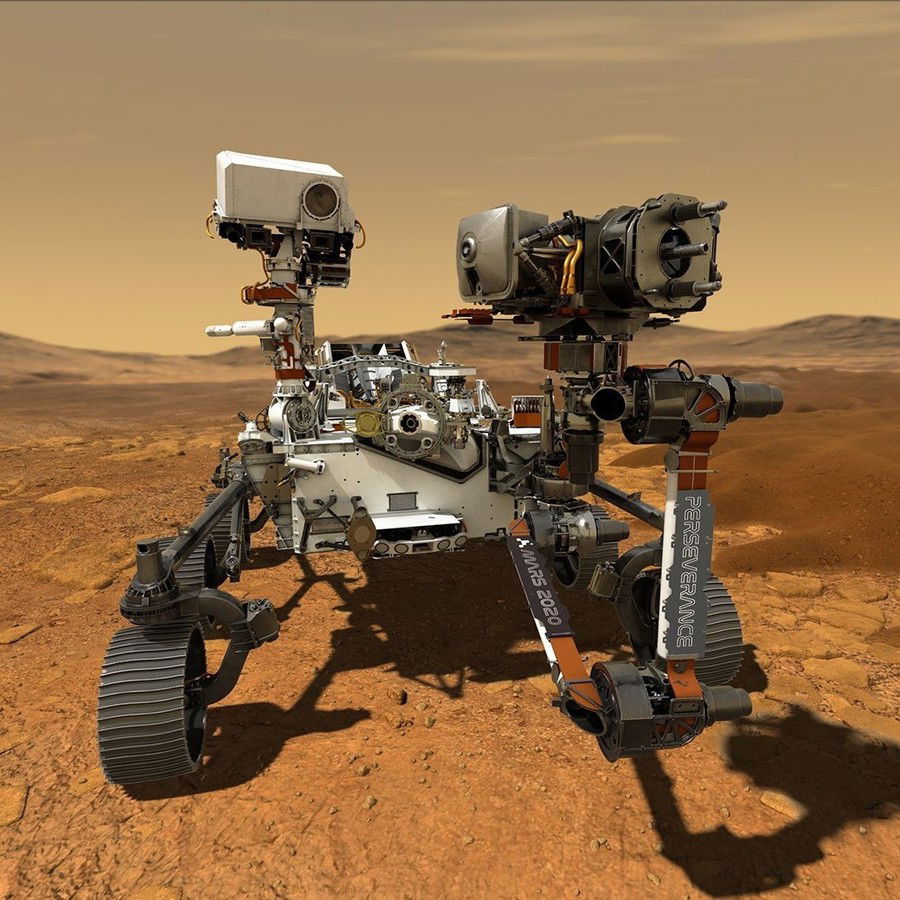
And what do we know so far? That it is still not habitable, and has extreme climatic conditions. NASA scientists intend to send astronauts to Mars in 2040, so let's see how that goes. Oh, and if you want to see some pictures taken by Perseverance, they're available on NASA's official website: Mars Perseverance.
Are you interested in Mars? If so, let's make the Red Planet our planet in "Terraforming Mars: the dice game"!
Game Info
Terraforming Mars: the dice game was inspired by its older brother, the acclaimed Terraforming Mars. For today's review, we'll just call it TMars. This is a dice game played with 1 to 4 players, rated for ages 12 and up, from game designer Jacob Frylexius. Its illustrations were created by Isaac Fryxelius, Jacob's brother.
TMars was released in 2023 by FryxGames, owned by Fryxelius, the Swedish family. Its basic mechanic, as expected, are dice rolls.
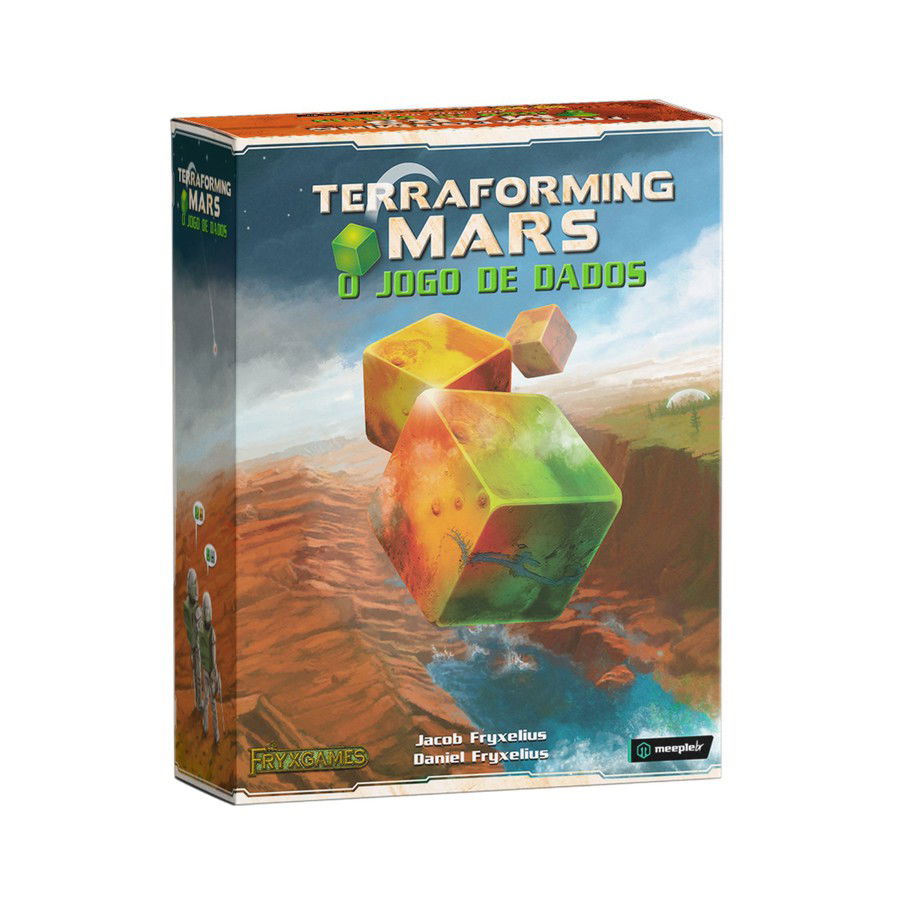
Oh, and the most important detail: you can play it regardless of which language you speak.
Let's get to the game!
The Game
TMars is incredibly easy to explain, and also beautiful: both the board, the cards, and the dice shine on your table!
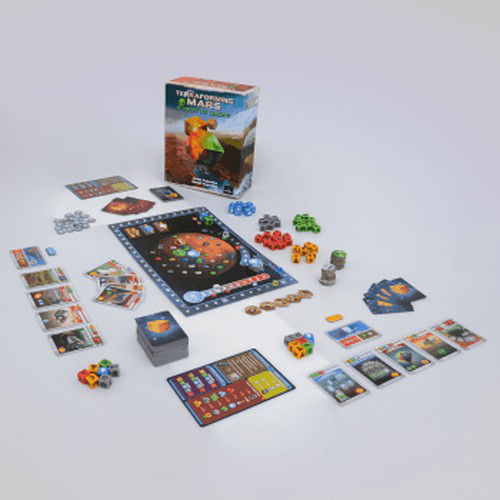
Playing it is even easier. On your turn, you get two options: Produce or Make Actions.
Producing will give you more dice, which is your main resource for everything in this game. With these dice, you'll play cards from your hand or activate a bonus, and, obviously, do all of this by using these dice (or resources if you prefer).
If you choose to make any Actions, you get 3 choices:
The great gist behind TMars is that, early on, you'll choose your Mega Corporation, which gives you some resources initially (dice), and some bonuses. No Corporation is the same; each one has their specialty, which is what makes this game extremely strategic.
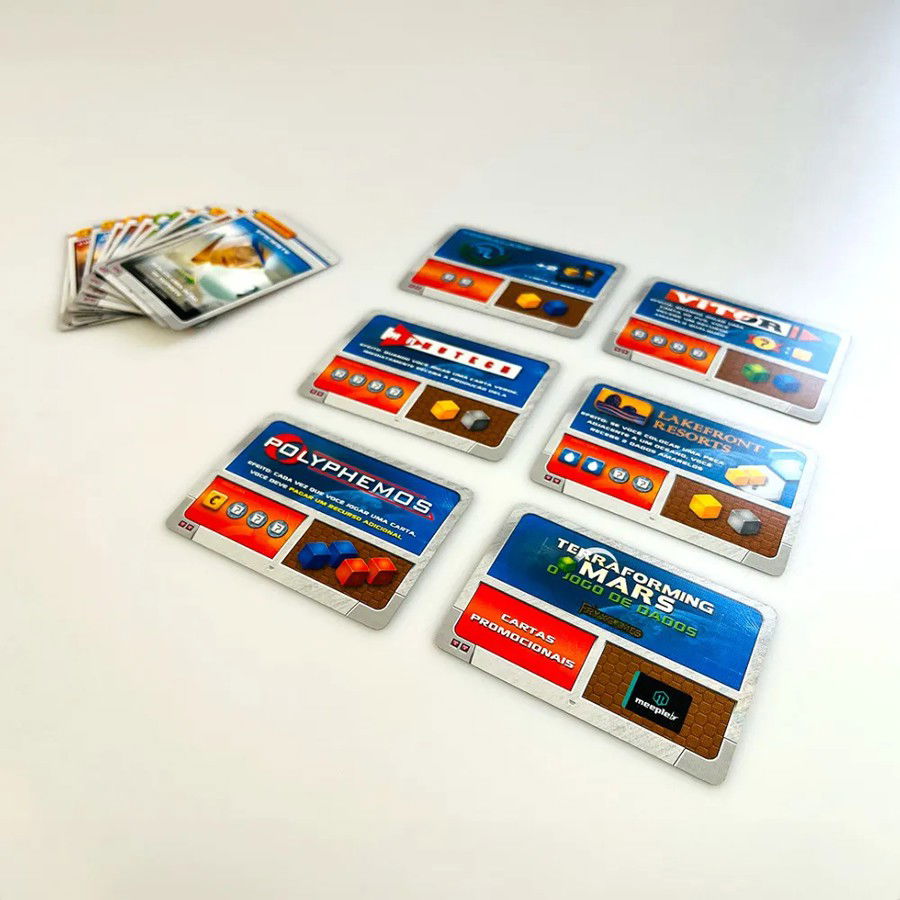
Another feature that makes this game even more competitive is that you always run after awards to produce certain resources even more, particularly as you hit some milestones when you terraform. This motivates players, and adds even more tension to your game.
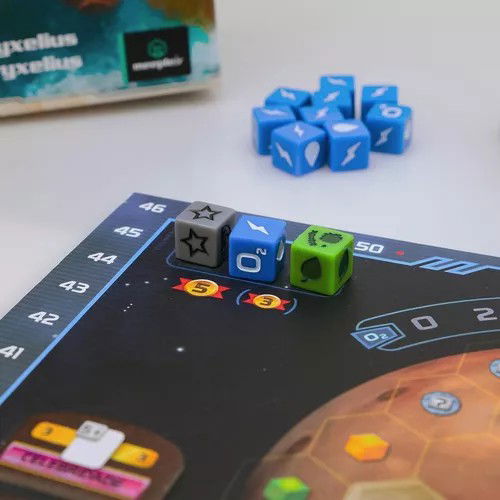
Besides awards, your score, and production milestones, there are many other things to race after in TMars. For instance, if you increase the oxygen level and the temperature in Mars, you'll get a few bonuses to use in certain situations.
You'll also race to build structures in a few specific regions in Mars, as they give you resources (and sometimes points) during the game, besides many other advantages. Notice that though it is a race, it is a highly strategic race.
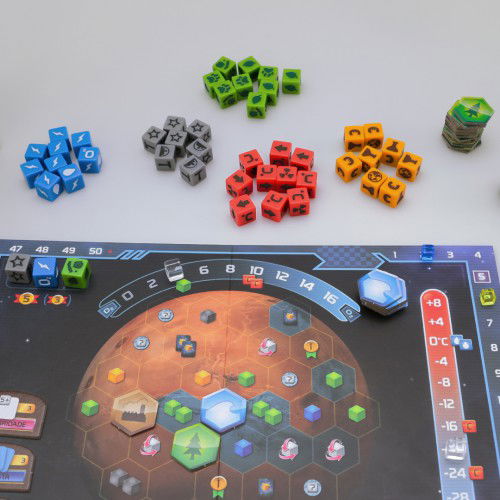
As you race for points, besides victory, during the game you get some bonuses when you get an "x" number of points, which is great; each player gets these bonuses two times per game. Obviously, the first players who do so get better bonuses, so it's up to you to manage that too.
TMars is really well-designed in everything. For instance, this game encourages you to build cities next to green areas and plant trees to improve Mars' oxygen levels. It all gives you more points and encourages you, in a way, to do the "right thing".
Additionally, you'll get multiple types of dice, or resources: commons, uncommons, and rares. Among these resources, there's money, plants, energy, steel, science, microbes, water, titanium, animals, nuclear, and much more to terraform Mars the best way you can.
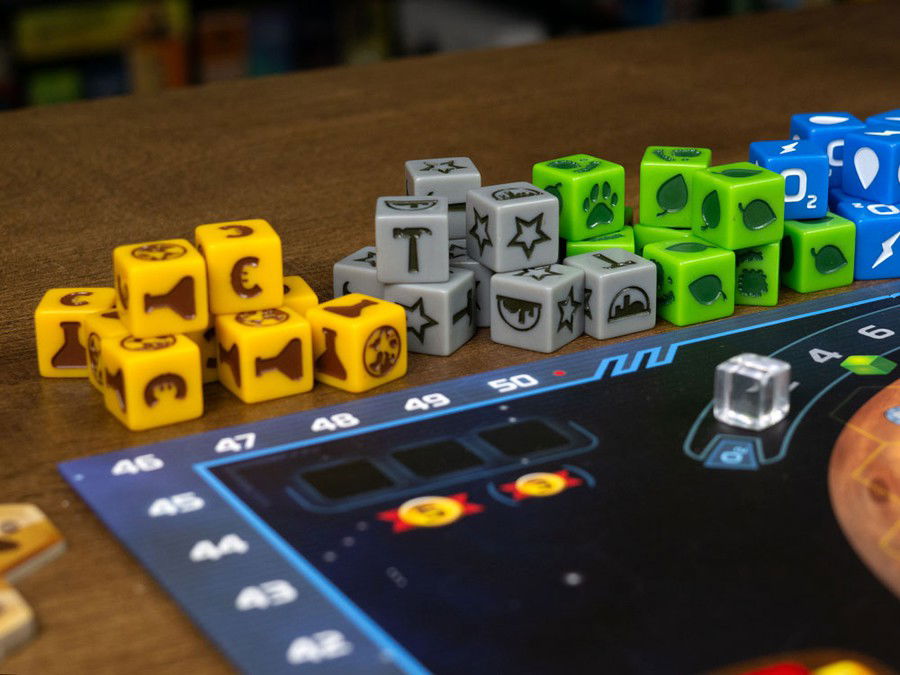
These cards move the game forward and give you either resources, bonuses, or actions. There are three types:
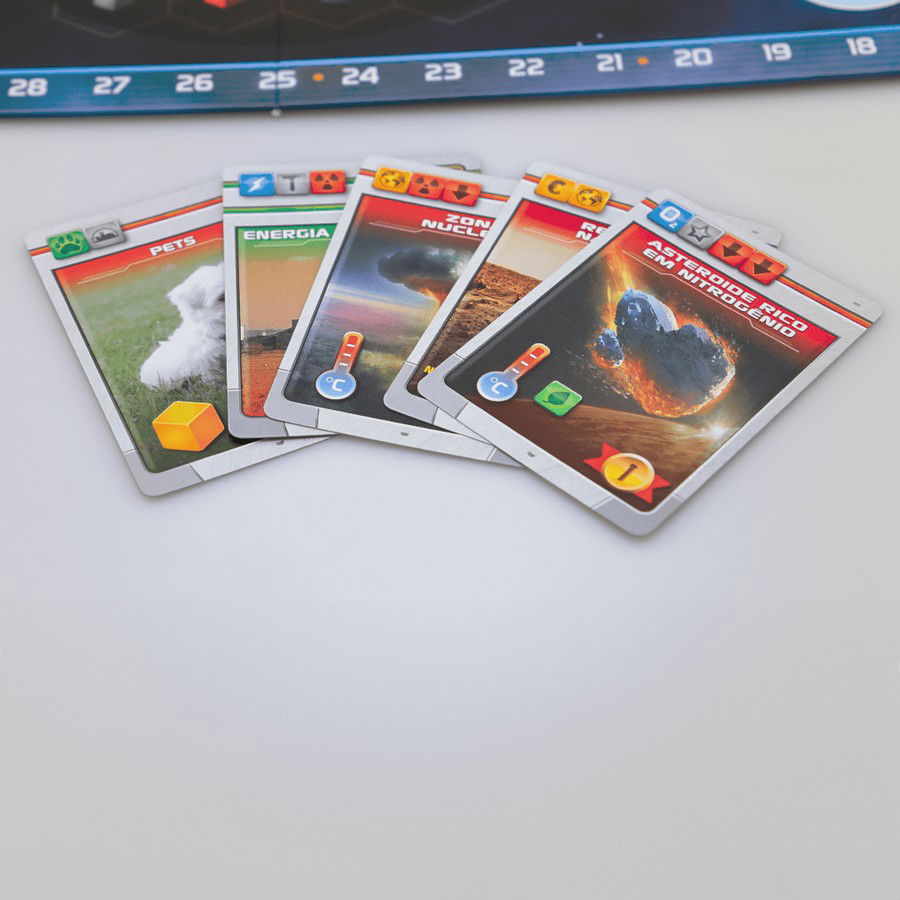
Obviously, some of these cards give you points at the end of the game, and it's important to track them down. Their cost (in resources) also gives more points to your final score as well (per production of resources).
The game itself comes with a pocket guide for players that sums up the entire game and helps you keep the game going. It's great!
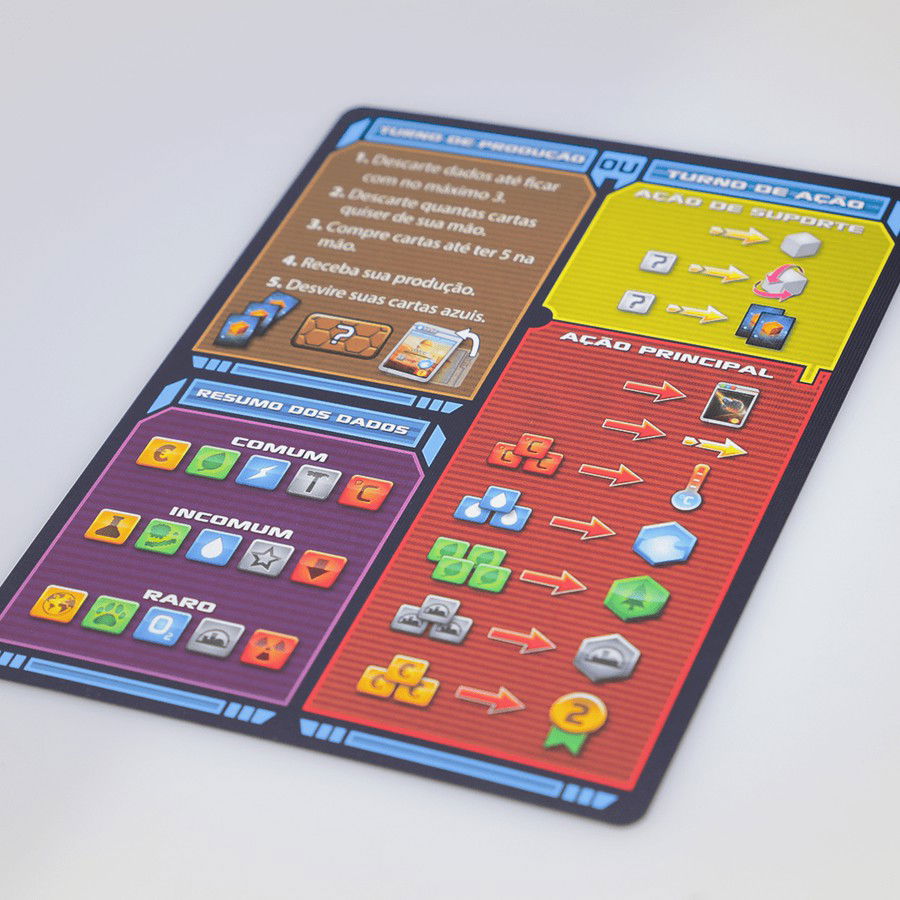
Either producing resources or making actions, keep an eye on everything when you play TMars; there are many details to manage that might be the difference between losing or winning!
That's TMars!
End of the Game and Score
The match ends when 2 out of the 3 global parameters (ocean, temperature, or oxygen) are met. Then, all players, including whoever triggered the end of the game, get one final turn.
This is how you calculate your score:
The player with the highest score wins the match! If it's a tie, the player who produced most dice for their corporation is the winner. It's that simple!
Strategy Tips
It's important to keep an eye on everything when you play TMars, quite literally too. Keep an eye on your production, construction, oxygen level, temperature, track record, the resources your opponents spent, well, everything. The rule of the game is: watch everything and everyone. But be careful because everyone else will watch you too.
You have to focus on producing more resources, or dice, to play more cards, and, in this game, the green cards give you more dice. So, I suggest you focus on that early on; it's essential. Not to mention that the resources you'll spend when you set up these cards (and others) count as resource production for your final score.
Later on, I recommend you invest in blue cards more, as they give you more options per turn. This means you get to do more on your turn, which in turn means you'll be able to play more strategies.
Red cards are great as well because they progress your oxygen and temperature tracks and give you points. This is important to get a few bonus cards, but really only consider investing them after you invest in green and blue cards.
Always keep an eye on what your opponents play and the resources they spent on their cards, as this will affect your final score. This may determine what you can build, unfortunately.
Meanwhile, any time you can, plant a tree, and improve your oxygen and temperature levels. This gives you a few bonuses as you play and, obviously, they count for your victory. By the way, this will be a strategy for you too because, as they are global parameters, when you progress one of them, if you don't pay attention, you might give bonuses to your opponents.
Don't lose sight of the milestones you need to hit; there are three milestones, and whoever gets them first gets their points. This makes a difference in the end because, in TMars, points are scarce.
Basically everything, absolutely everything, makes a difference in TMars: your actions and the opponents, it may all turn into points at the end of the game. TMars demands a lot of your focus and a good dose of strategy. It also creates some good tension and keeps you wired up from beginning to end.
Manage everything and have fun with TMars!
Unboxing, Rules, and Gameplay Videos
Enjoy this unboxing:
Watch a video on the game's rules:
Check out some gameplay (with rules):
Teaching Tips
TMars, on its own, is a lesson in geography, history, science, the environment, and resource production. You also use strategy, focus, attention, and math to play this game. Allow me to explain all the advantages you get from playing this game and what it encourages.
Paying attention to air and temperature quality is a great thing to do daily. TMars is a lesson in environmentally conscious decisions and good management of the resources you have available.
It's also a geography lesson because you have to choose the best regions in Mars to take advantage of the resources available in the best way you can. It's a history lesson because you can research how much we found out about Mars so far. And it's a science lesson because the resources in the game, combined, are quite accurate when you need to play cards. Only the right combination of resources gets you good results.
Math is also in play at all times: you need to count the resources you have, how much you can use, which ones are running out, what your opponents are using in terms of resources, your points, awards, milestones, and oxygen and temperature levels. You'll have to manage your numbers at all times.
Final Words
Hone your focus and attention to pick the best strategy in TMars. Everything, I repeat, absolutely everything, gives you points in TMars, and might be the difference between losing and winning.
In general, TMars teaches you how to research and take care of your own planet!
I highly recommend you add TMars to your board game collection!










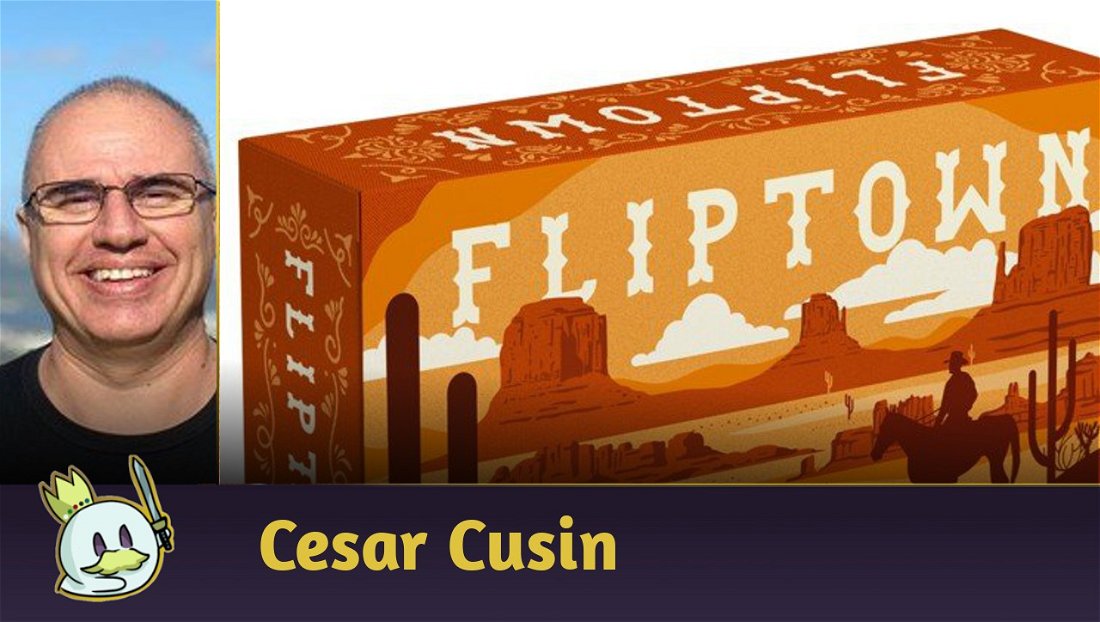



— Comentarios 0
, Reacciones 1
Se el primero en comentar